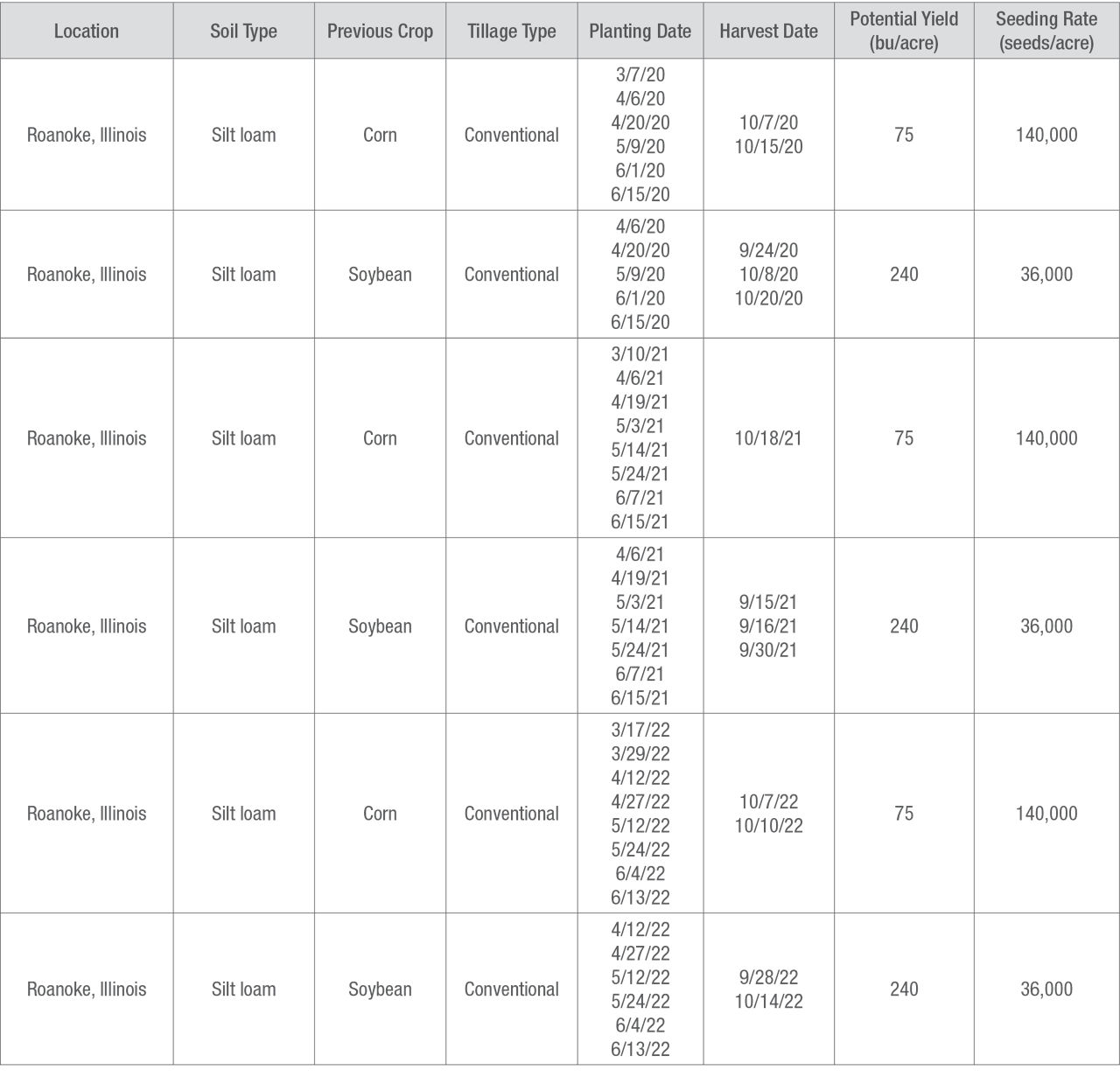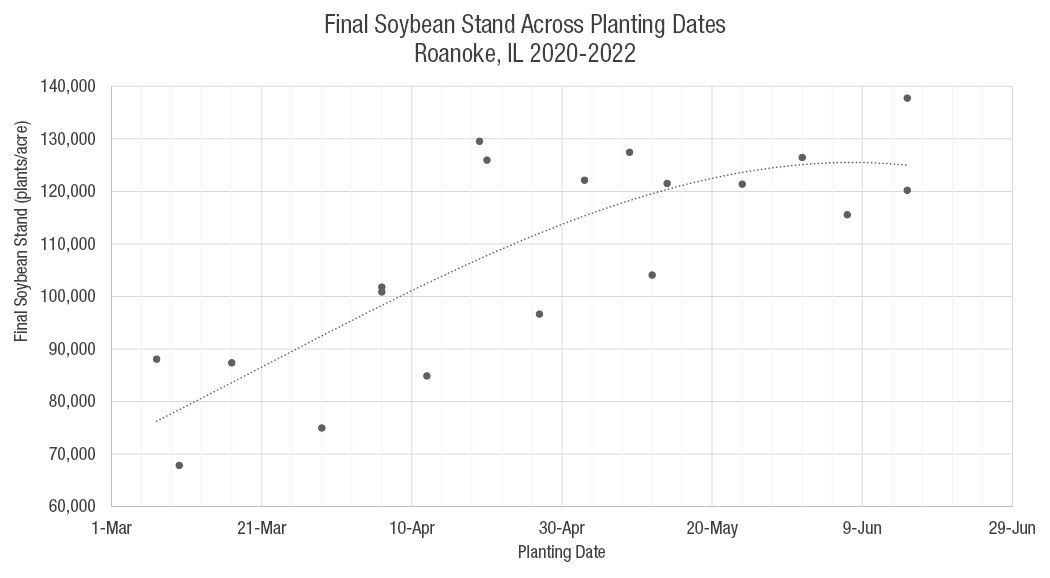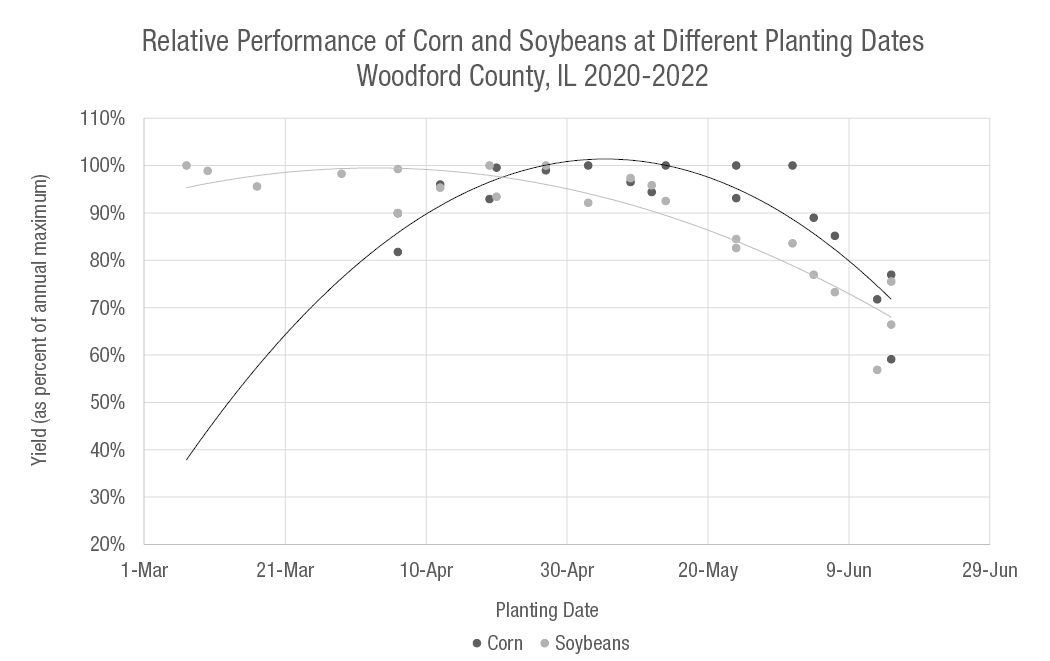5 MIN READ
Deciding Whether to Plant Corn or Soybean Based on Field Conditions
March 7, 2023
TRIAL OBJECTIVE
- Widespread adoption of soybean seed treatments has led to an increase in early soybean planting by growers across the midwestern United States. As an example, Illinois growers planted 41% of the soybean crop by May 2, 2021, compared to the five-year average of 14%.1
- Early in the planting season, growers are often faced with the decision of whether to plant corn or soybean first.
- This research was conducted with a goal of understanding the risks and benefits of planting corn and soybean at various timings throughout the spring.
RESEARCH SITE DETAILS
- Corn and soybean were planted on simultaneous dates across two growing seasons.
- In 2020, a 3.6 maturity group (MG) soybean product was planted. A 3.5 MG soybean product was planted in 2021 and 2022.
- In 2020, a 114-day relative maturity (RM) corn product was planted, while the 2021 data includes an average of 113- and 114-day RM corn products at each planting date.
- 2022 data includes an average of 111- and 114-day RM corn products.

UNDERSTANDING THE RESULTS
In both 2020 and 2021, heavy frost reduced the soybean stands in the earliest planting dates.



- Highest soybean yields were consistently found with early planting dates. Soybean yield steadily declined in progressively later plantings.
- Conversely, corn yield was negatively affected by too early and too late planting dates.
KEY LEARNINGS
- These data support the increasingly accepted practice of planting soybean early in the growing season while waiting until conditions are more favorable for planting corn.
- As a general rule, soybean seed can be planted when soil moisture conditions are satisfactory, regardless of soil temperature and weather forecast.
- However, corn planting should wait until favorable weather is forecasted and proper soil conditions (temperature and moisture) prevail.
Sources:
1Illinois Crop Progress and Condition. May 3, 2021. United States Department of Agriculture Statistic Service. https://www.nass.usda.gov/Statistics_by_State/Illinois/Publications/Crop_Progress_&_Condition/2021/20210503-IL-Crop-Progress.pdf
1110_194222